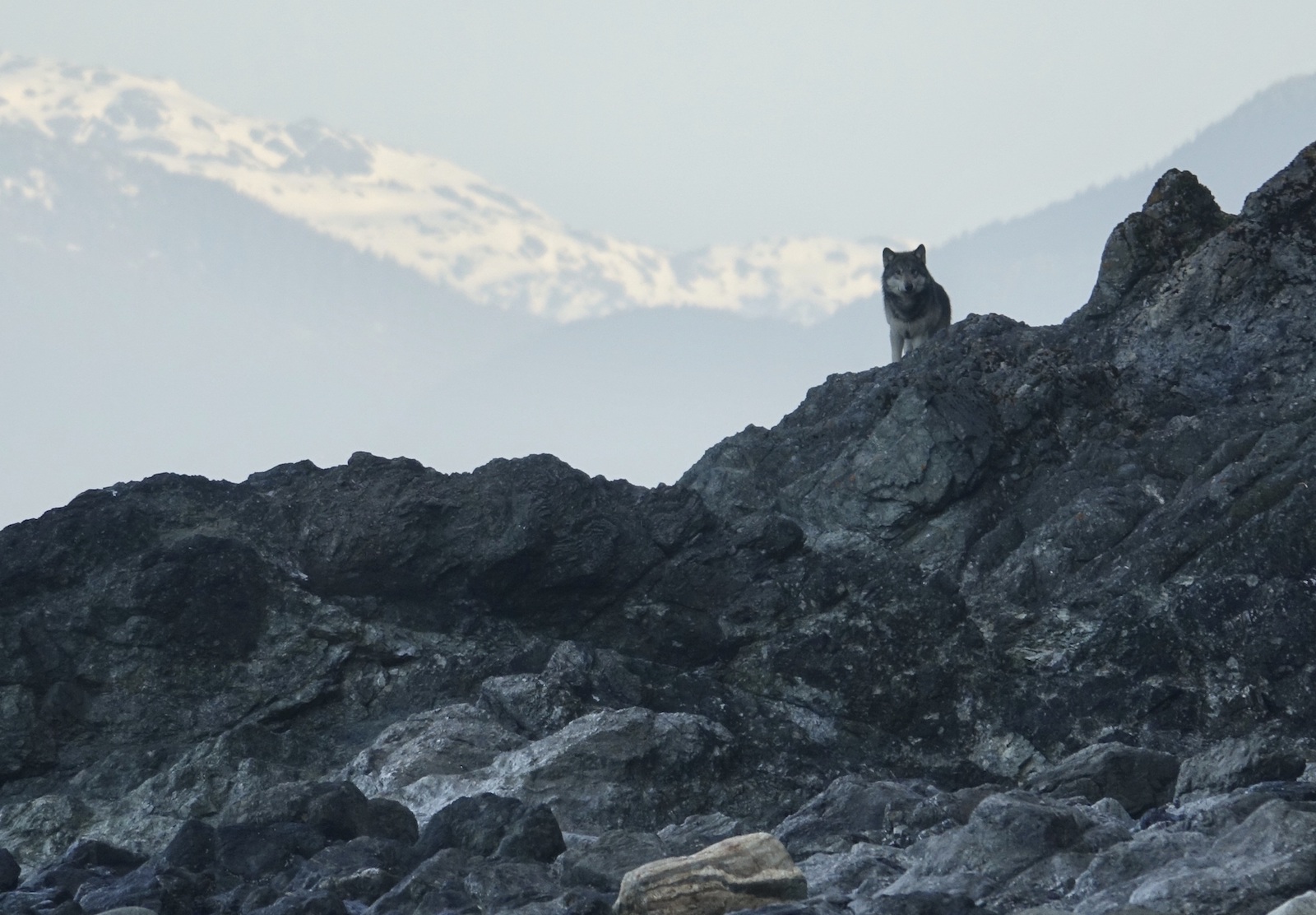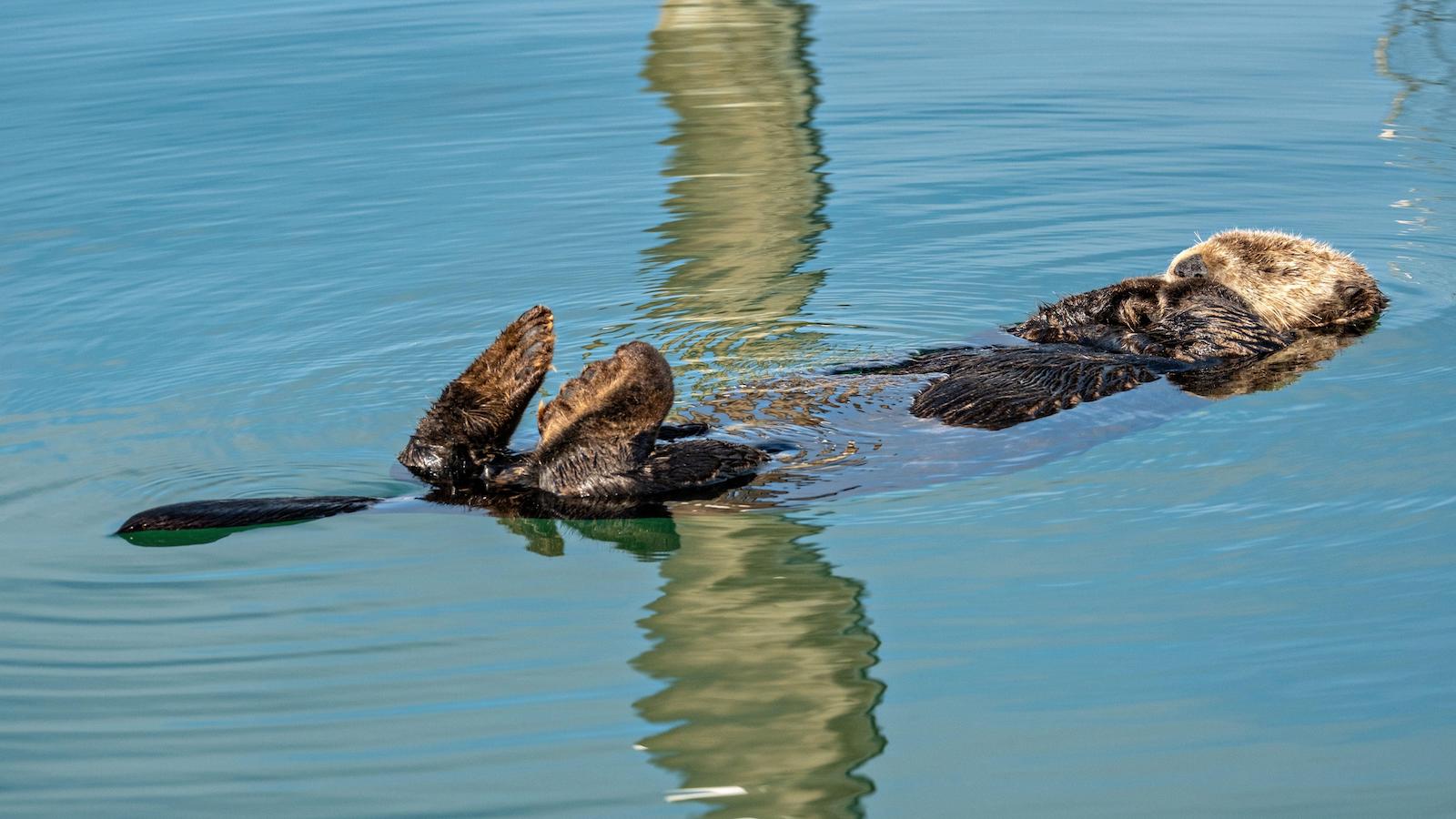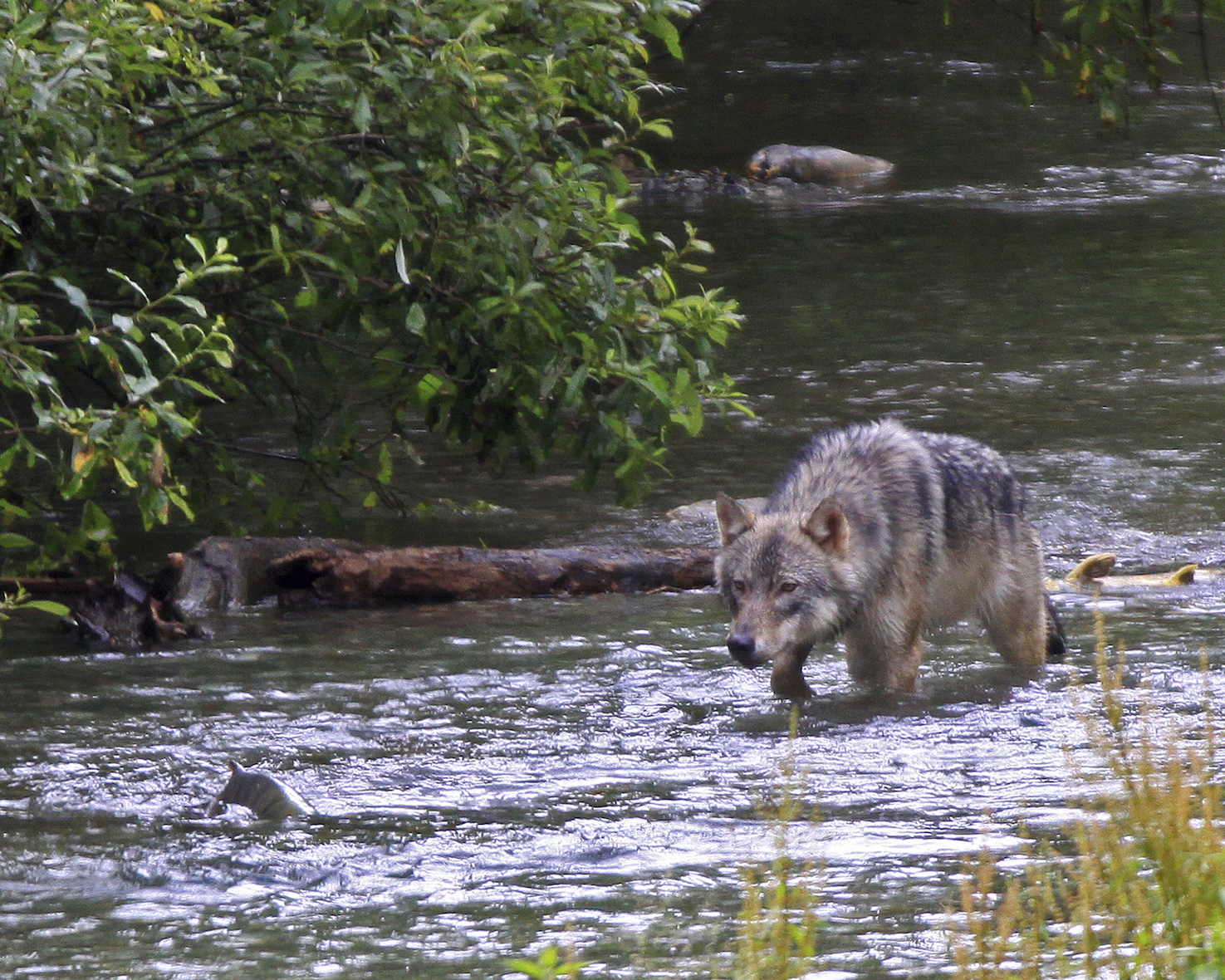Alaskan sea otters were brought back from the brink of extinction. Now wolves are hunting them.
The wolves appear to be snatching otters from shallow waters and rocks along the shore.

After eradicating their deer prey, wolves on a remote Alaskan island have turned to voraciously hunting and consuming sea otters as their main food source, a new study has revealed.
The discovery, made on the 20 square mile (52 square kilometers) Pleasant Island located roughly 40 miles (65 kilometers) west of Juneau, Alaska, marks the very first time that sea otters (Enhydra lutris) have been documented as the primary food source for a land-based predator.
The wolf pack responsible for the otter carnage first swam to the island to begin hunting in 2013, subsequently causing the island's deer population to plummet. Yet after eliminating their main source of food from the island, the wolves (Canis lupus) didn't leave. Now, a study published Jan 23. in the journal Proceedings of the National Academy of Sciences, has tracked the pack since 2015 to reveal how the wolves adapted to eat otters.
Related: A group of violent otters is mysteriously attacking people and dogs in Alaska

"They aren't just scavenging sea otters that are dead or dying, they are stalking them and hunting them and killing them and dragging them up onto the land above the high tide line to consume them," study co-author Gretchen Roffler, a wildlife research biologist at the Alaska Department of Fish and Game, said in a statement.
To study the pack's eating habits, the researchers attached GPS collars to some pack members and collected 689 samples of wolf scat, much of which was found littered along the island's shoreline. By analyzing the DNA in the scat, the team could identify the wolves it came from and what they'd eaten. Between 2015 and 2020, deer dropped from being 75% to just 7% of the pack's diet. Sea otters, on the other hand, had shot up from 25% to 57% of the wolves' diet across the same timeframe.

The GPS collar data also confirmed that the wolves were not leaving the island to hunt elsewhere and that when they did hunt they did so by the shore — snatching unsuspecting otters from shallow water or ambushing them as they rested on rocks during low tide.
Sign up for the Live Science daily newsletter now
Get the world’s most fascinating discoveries delivered straight to your inbox.
"The thing that really surprised me is that sea otters became the main prey of wolves on this island," Roffler said. "Occasionally eating a sea otter that has washed up on the beach because it died, that is not unusual. But the fact that wolves are eating so many of them indicates it has become a widespread behavior pattern throughout this pack and something that they learned how to do very quickly."
The new study builds on findings that the group published in 2021 in the journal Ecosphere, in which they first reported on the wolves' unexpected diet. Scientists haven't studied the interactions between wolves and sea otters in Alaska because the two species haven't overlapped for roughly 200 years. Over the 19th and 20th centuries, the fur trade wiped out the region's sea otters, and new populations have only been reintroduced in recent decades.

Ben Turner is a U.K. based staff writer at Live Science. He covers physics and astronomy, among other topics like tech and climate change. He graduated from University College London with a degree in particle physics before training as a journalist. When he's not writing, Ben enjoys reading literature, playing the guitar and embarrassing himself with chess.










